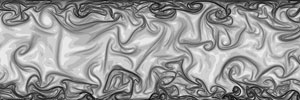Seedmagazine.com | Saved by Science
Great set of pictures from inside the Natural History Museum [via Noah Brier].
Great set of pictures from inside the Natural History Museum [via Noah Brier].

Richard Dawkins on TedTalks explains how our size affects our model of the world. One idea that particularly struck me is that something as fundamental as the concept of “solid” might simply be a useful interpretation, biologically evolved. If you’re not doing so already, do yourself a favor and watch all the TedTalks — they’re solid gold.

It turns out that some women may see 100 million colors, way more than the average person. It’s hard to imagine what the world would look like for these individuals! In a related note, I just finished reading Oliver Sacks’ An Anthropologist on Mars, a collection of stories about unusual neurological conditions, and I can highly recommend it.

Awesome video of sound waves causing patterns to appear in a pile of salt. Watch out, the sound gets very high pitched so you may want to turn your speakers down/off.

Fascinating research on the half-life of online news, trying to determine how long a story stays ‘live’. I highly recommend Barabasi’s book Linked, about the science of networks.

What art can tell us about the brain, a presentation about art and vision.

Art of Science 2006 is a collection of stunning scientific pictures.

In the past months, I have come across no less than two articles on Biomimicry entitled Nature’s Design Workshop: MSNBC and more recently BusinessWeek (make sure you watch the slideshow).
Researcher Promode Bandyopadhyay has a very interesting quote:
I am against mimicry. I am against making a mechanical zoo. There is no science in that. It is imperative to understand the science first.
Nature is great at finding a solution to a very particular problem within a precise set of environmental constraints. The researcher’s role is to understand how nature’s solution works and to generalize it to other applications. Combine nature’s adeptness at finding efficient, sustainable solutions with our ability for abstract thinking and we get some of the very best engineering around.
For those not familiar with the term, the Biomimicry Institute gives the following definition:
Biomimicry (from bios, meaning life, and mimesis, meaning to imitate) is a new science that studies nature’s best ideas and then imitates these designs and processes to solve human problems.
Their website has a good introduction to the concept, and a bunch of interesting case studies.

Ants apparently navigate by counting their steps.

The reverse colorblindness test uses pictures that are only discernable to colorblind people. While we’re on the topic, this article describes color blind image correction, or how to help color blind people see images better.